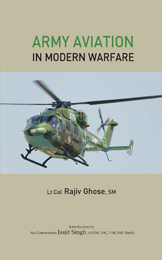Subjects
Recent View(s)
Air Dominance
Jasjit Singh
In the continuously changing nature of war, the terminologies in the military forces of the world also change, often more than war itself, mostly introducing esoteric vocabulary. The term “air dominance” in this context is of comparatively recent origin. The effect and outcome of war in and from the air has come round full circle, from command of the air a hundred years ago to air superiority in World War II to favourable air situation to “air dominance” now.
Most people who use this term actually use it in lieu of air superiority. Air-to-air dominance of the adversary is certainly crucial for any future war even among nuclear weapons states if they do go to war. Air-to-air warfare had moved out of the line of sight limitations long ago to become all-weather and day-night warfare. But air-to-ground warfare had remained limited to line of sight strikes and, hence, also fair weather essentially because of the limitations of available technology to locate moving targets on the ground. BVR (Beyond Visual Range) air-to-air guided missile and radar ranges have increased substantively. Hence, the battle for air-to-air dominance would certainly exist as a follow-on to the struggle for air superiority.
While few countries can possess capabilities of the US JSTARS type, it is clear that advances in sensor technologies and use of UAVs, for example, create capabilities that are within the reach of even middle powers. The ultimate importance of air power rests on its strategic role and capability, unmatched by the other two Services. This is due to the very nature of the medium it operates in. Air power can influence and even control the movement and actions of surface forces. But the reverse is not true except in a limited sense through terminal defence. And if aircraft can launch weapons with the requisite accuracy from beyond their range, air power becomes completely independent of even that limited imposition by surface forces.
It is with the aim of exploring the doctrinal, operational and management issues of air dominance in the air and from the air that we organised an international conference, the proceedings of which are put together in this volume.


 Political Science
Political Science


